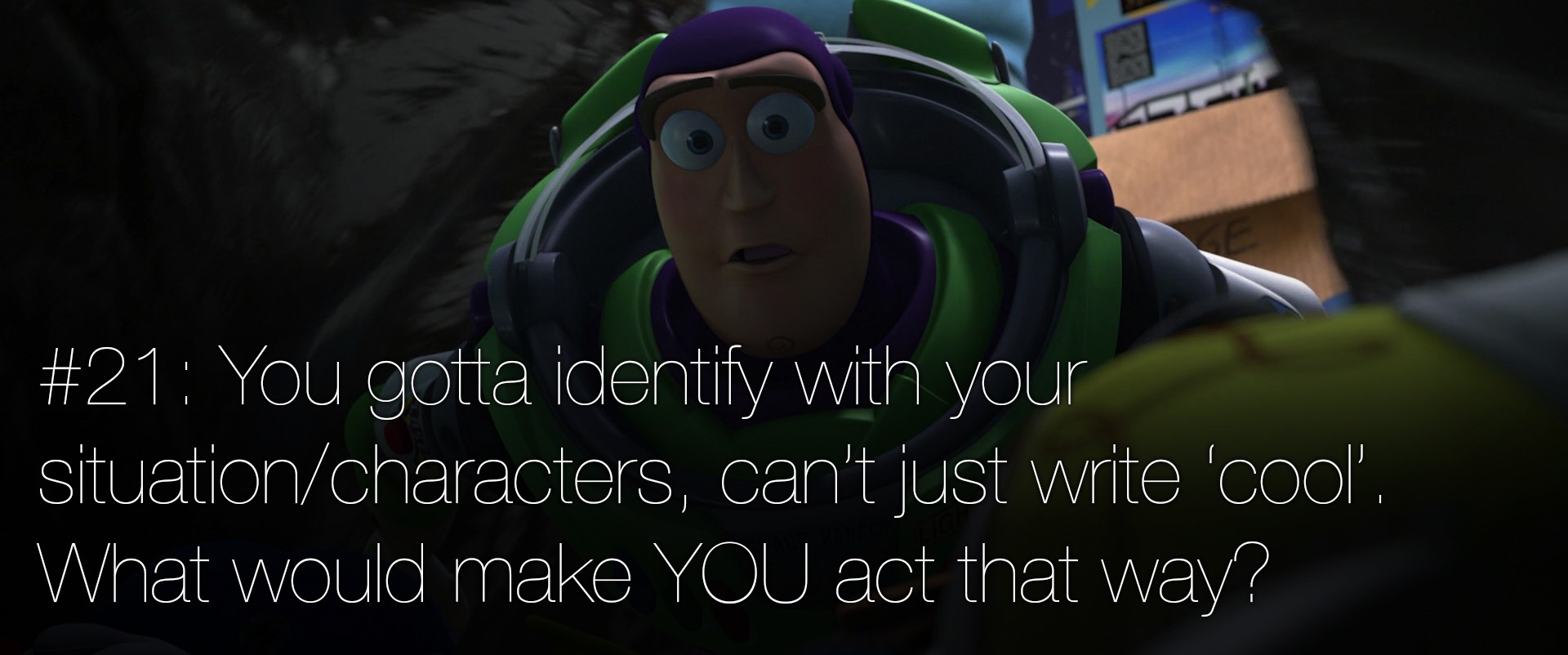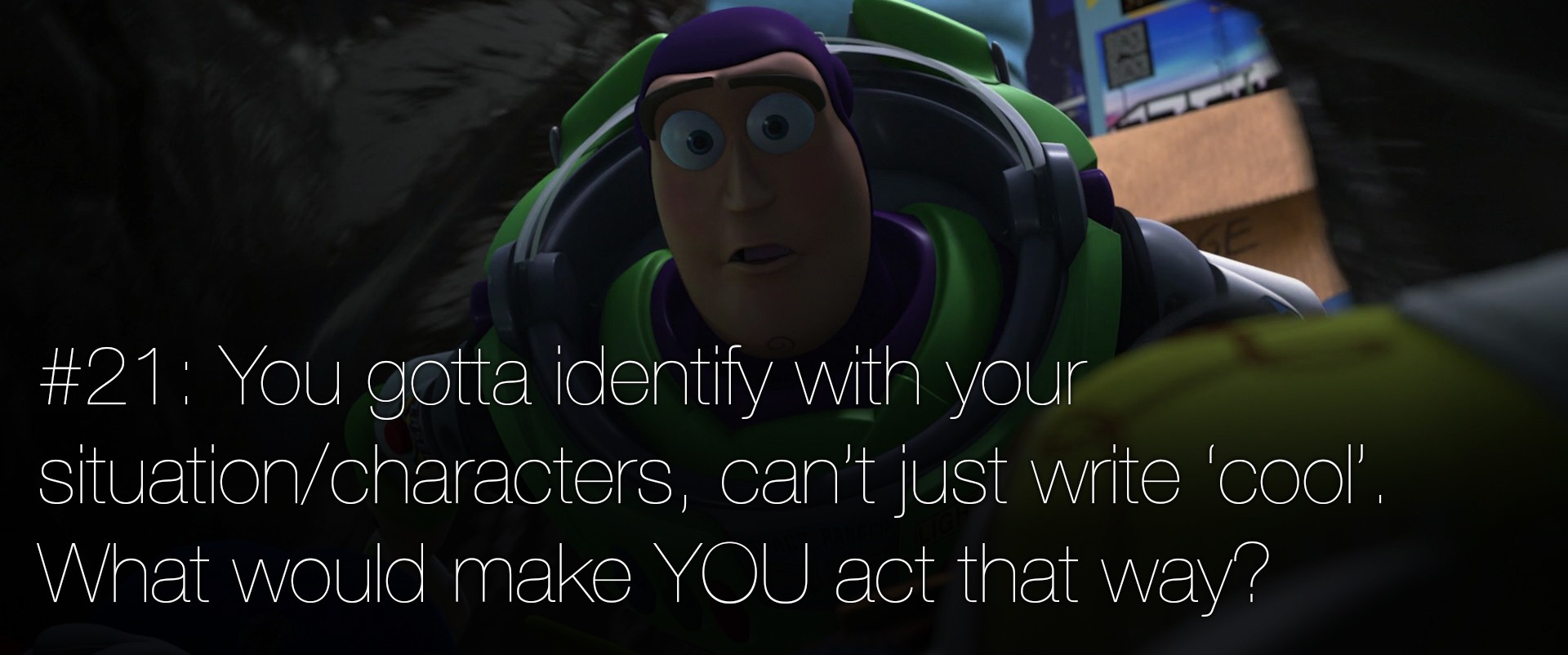A couple of years ago, then Pixar storyboard artist Emily Coats tweeted pieces of advice on making stories that she had picked up from working with Pixar, which were later compiled in several places on the internet, such as this io9 post. Later, Dino Ignacio created image macros of the individual rules which I am using in these posts.
Rule #21: “You gotta identify with your situation/characters, can’t just write ‘cool’. What would make YOU act that way?”
I have seen a lot of stoic, unflappable characters in my time roleplaying. From both sides of the screen. It’s not surprising, as our society places a lot of stock in being able to calmly not display emotion. It lets you bluff, it helps you hide sensitive secrets, and it creates an impression of confidence. The more in control a character seems, the more capable they appear.
It’s also really boring. It’s stiff. It leaves the group without any sense of cohesion, since none of the PCs seem to care about each other. It makes NPCs come off as aloof and suspicious. No one ever really feels impacted by their surroundings, and so stakes seem unimportant.
You can fix this first by taking the advice of the rule: Ask yourself why you would act in such a way in the scene you’re crafting. If the answer doesn’t fit, then either change the situation or change the reaction. Don’t have your antagonist remain cool and composed no matter the situation, have them react. Yes, if the PCs play into their plans, they should be able to exult in their success and maybe gloat a bit, but that’s usually not the problem. When they suffer setbacks, that’s when you really need to remember this. Sure, if it’s something minor they might take it in stride, but if they suffer a major setback, then they should react accordingly; they should get frustrated or angry, or maybe even afraid or despairing if it looks like all their work has been for naught. You want to avoid getting so caught up in building up an antagonist as a powerful, unstoppable force that you forget to acknowledge your players’ small victories.
In a broader sense, you can encourage a greater variety of reactions by not treating emotional displays as weaknesses to be exploited or drama to be avoided. If your NPCs aren’t afraid to let people know what they’re feeling, the players will slowly get the hint that they won’t be punished for doing the same. And when they do start to form emotional connections to your NPCs, don’t respond by immediately killing/kidnapping/exploiting those connections for cheap motivation, or they’ll learn that getting attached to your NPCs just drags them into trouble. Now, maybe you want to tell the sort of story where the heroes keep getting dragged into trouble because they just can’t help but help the people they meet, but that kind of story is hard to keep going if the heroes never seem to like anybody or have a clear reason for getting involved. Which means you need sufficient buy-in from your players to have them invest in your NPCs despite knowing that every one of them is down on their luck and two seconds from seeing the hammer fall.
It’s also worth keeping in mind that this is both a personality thing and a culture thing. Some characters might just be the type to never show emotion for whatever reason, and there might be cultures in your setting that value emotional control. The important thing is variety. Playing up mismatches between personality and culture can be an excellent way to provide variety and avoid having a cast of NPCs that are indistinguishable. In a culture where emotional control is prized, the players might encounter a character who has difficulty restraining their exuberance. If the prevailing norm is to wear one’s heart on one’s sleeve, they might meet someone who cannot express emotion in the way their society expects. Remember also that “controlled” emotions don’t go away, they get displaced. It may not fit a character to go into a ragefit when angry or burst into tears when sad, but those emotions will still work their way out somehow, and your players may even get a sense of satisfaction out of realizing the subtle ways in which your NPCs let their emotions slip out. Just remember to tie those emotional responses back into the scene in a way that makes sense to you, rather than getting so caught up in a certain display (or lack thereof) that you forget to lay the foundation.





